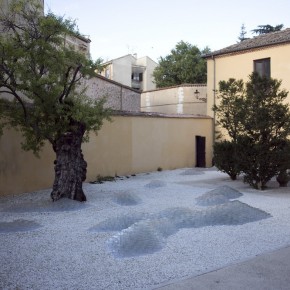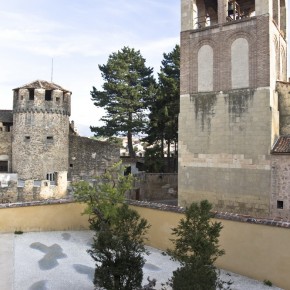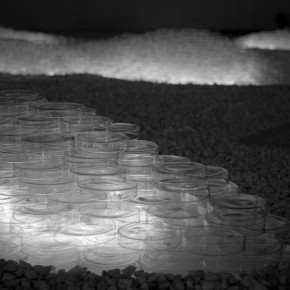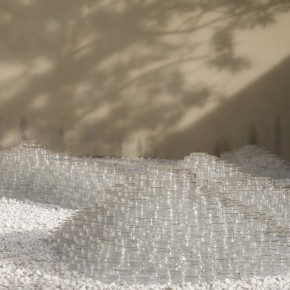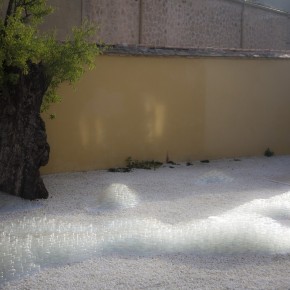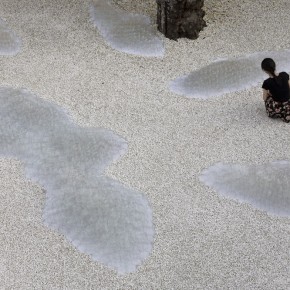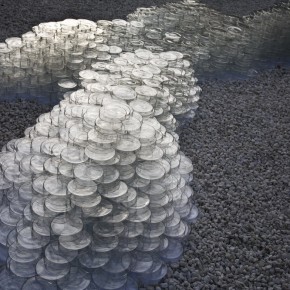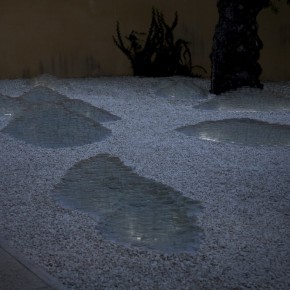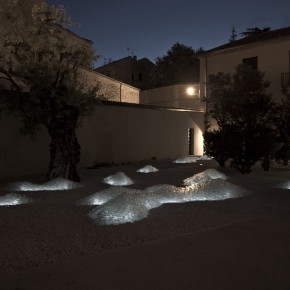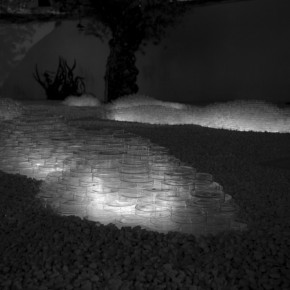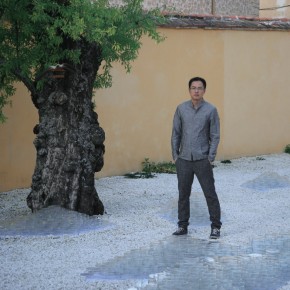
“Pavilion of China – Architecture China 2013” opened in Palacio Quintanar in the ancient city Segovia in Spain, and continues for three months. The exhibition presents “Kong Shanshui/Empty Shanshui” by the Chinese architect Ye Cheng, which is the only work presented in the exhibition, permanently collected by Palacio Quintanar, at the same time it presents the latest works by Chinese and foreign architects including Wang Shu, Liu Jiakun, Ma Yansong, Ma Qingyun, Rem Koolhaas.
In late September 2013, “Pavilion of China – Architecture China 2013” opened in Palacio Quintanar in the ancient city Segovia in Spain, which is an art museum that has evolved from an ancient Spanish nobleman’s mansion the Palacio Quintanar. The large scale installation “Kong Shanshui/ Empty Shanshui” features white stones, full of Zen, at the courtyard of the museum. It is representative of the cross-border artworks of installation, and it is composed of 10,000 petri dishes, placed in the open-air courtyard, from early morning to late afternoon, from day to night, there are different states: there is dew in the petri dishes in the morning; light is gentle in the morning and the glass is transparent; when there is direct sunlight at noon, the installation is entirely placed in the sun, strongly reflecting, which is in contrast to the dry surrounding environment, making people feel cool; the setting sun is blocked by the house in the evening, so the glass reflects the light from the sky, seen as backlit, it looks like the scales of a huge creature stranded on the beach, with rich tones; the whole glass hills is self-luminous at night, producing a transition effect changing from semi darkness to darkness. The installation is spread out around a tree in the courtyard, and the glass hills next to the tree has floating leaves. Whenever wind blows into the yard, the glass petri dishes would sound crisply and subtly like the campanula.
As an architect, Ye Cheng has always arranged the exhibition according to the exhibition space. “Kong Shanshui/ Empty Shanshui” in Segovia is different from the Shanghai Version exhibited at the Shanghai Himalayas Museum in June. It was on display at a hall in the Himalayas Museum, where there is a huge square column placed at the center, making an interference with the artworks of installation. Because “Kong Shanshui/ Empty Shanshui” was like “air”, surrounding mountains, followed by water, Ye Cheng simply wrapped up the bottom of the column using glass peri dishes, buried in the square column, dissolved in the transparent and fuzzy image of the glasses, while the works were also fully integrated into the space. Fang Zhenning, curator of “Pavilion of China – Architecture China 2013” paid attention to the works and invited Ye Cheng to bring this large scale outdoor installation of Oriental artistic conception, into Spain and presents it at the “Pavilion of China – Architecture China 2013”.
As it is on display outdoors, taking into account the night show, the “Kong Shanshui/ Empty Shanshui” is produced as a self-luminous work. When night falls, the faint light disperses from every hill, to create an overall oriental mood by the light.
About Kong Shanshui/Empty Shanshui
Material: Petri dishes, Neon lignts, PVC boards etc.
Dimension: 21x12x1.2m (depending on location)
The installation is composed of 10,000 petri dishes, which stretches along the ridges of the glass hills. The atmosphere of Shanshui dissolved the original characteristics and functions of the petri dish as standardized industrial products, while the eastern rhythm was infused within. The aggregation of petri dishes entailed a visual explication of the spirit of "Shanshui". The transparent objects are scattered around in a free-style before being spread around the obstacles on site, mimicking clusters of clouds wondering above mountain tops, providing shade for the ground.
Breaking ground and going out vibrantly, the glass hills exhibit a crystal-like fluid state when exposed to sunlight. Neon light installed under every single glass hill, lights up the night softly. Refracting through the petri dishes several times before filling its surrounding, the light reveals a wonderland, in between the blurred boundaries of man-made and natural elements, just like a tidal wave of lightning or fog.
This work was not an attempt to invoke concrete visuals of Shanshui, but rather, implement ideologies of thresholds adopted by both Tibetan Buddhism and a Japanese zen garden, to extend the physical and immaterial limits of the alienated form of the Shanshui-scape, a metaphor for minimalism and the panoramic enchantment of Shanshui.
Courtesy of the artist, translated by Chen Peihua and edited by Sue/CAFA ART INFO


